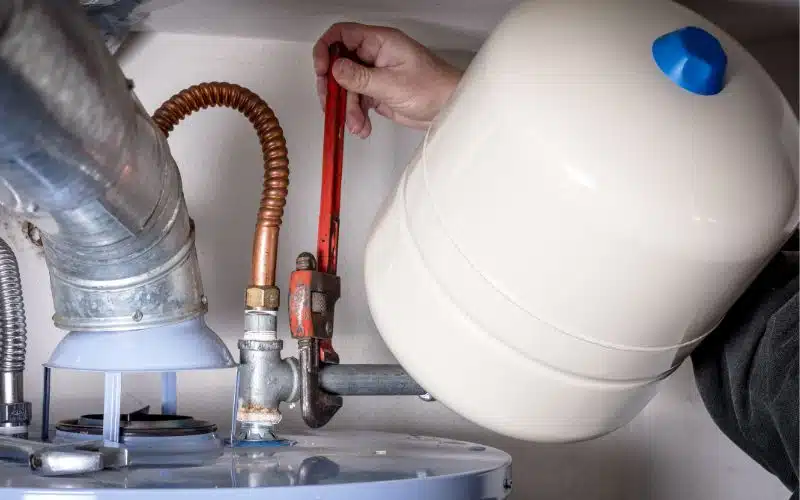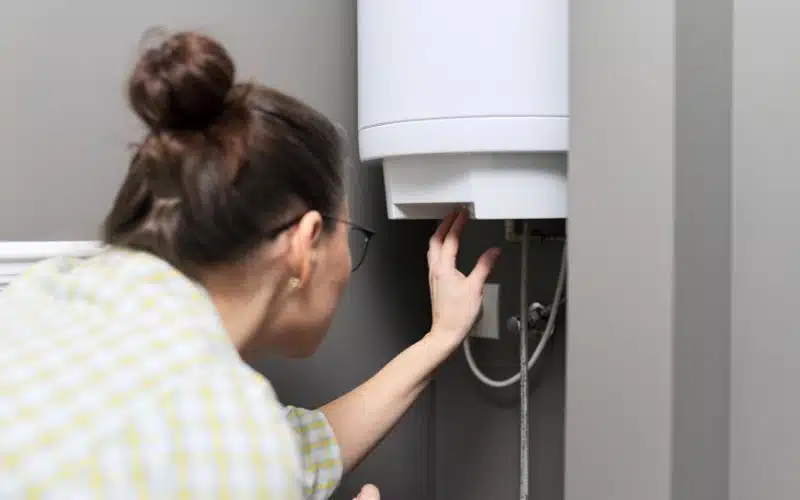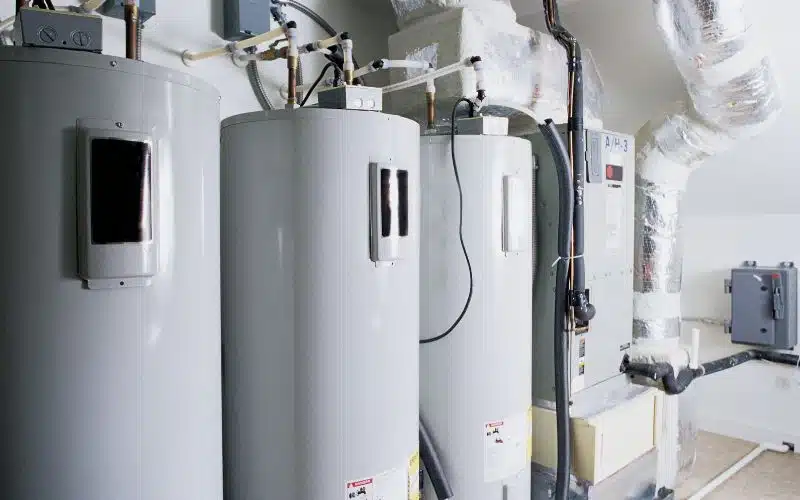Rheem water heaters are undoubtedly the best brand on the market. Having four out of five products on Forbes’ Best Water Heaters Of May 2023 is no mean feat!
The rave about Rheem water heaters is worth it due to their outstanding quality. They offer great value for money, and the durability is exceptional too.
Regarding durability, you may wonder if Rheem water heaters have dielectric nipples (or unions). That’s because dielectric nipples help with durability by preventing corrosion.
Fittingly, Rheem water heaters have dielectric nipples as an essential part of their design. That may explain why Rheem water heaters are so durable. However, other brands use dielectric nipples as well. So the edge indeed lies in the uniqueness of Rheem. Regardless, dielectric nipples are a priceless addition to piping systems, preventing corrosion and large-scale leaks.
It’s easy to see that dielectric nipples boost water heaters’ durability since they prevent corrosion and leaks. But you must be wondering what feature they possess to do so.
This article will detail what makes dielectric nipples part of Rheem water heaters. Also, you’ll discover if they’re alternatives and if water heaters can function without them.
Do Rheem Water Heaters Carry Dielectric Nipples?

Yes. Rheem water heaters carry dielectric nipples. This feature undoubtedly boosts the durability of Rheem water heaters because dielectric nipples limit galvanic corrosion.
Galvanic corrosion is sure to occur in the fittings of water heaters because they usually comprise two dissimilar metals. We have steel and copper to be the standard options.
Although that set up of steel and copper is flawless, trouble ensues with water in the system. That’s because water is an electrolyte and soon triggers a reaction.
As the water flows in a pipe, it displaces bits of one metal and deposits them on the other.
Depending on the direction of water flow, it may be steel particles flowing to copper or the other way round. Either way, both metals will degrade significantly, being dissimilar.
So, as long as water keeps flowing in the pipe, it’ll electrolyze the joint, and the state will worsen. Corrosion goes unnoticed when it starts until the effects become visible.
At that point, you’ll notice the pipes on your water look rusty. The usual thoughts are that water leaks make wreck pipes, but that’s not the case.
Water leaks will be part of the problem at that point. But the main problem is a consistent chain of electrolysis happening in your water heater.
Seeing the damage dissimilar metals can cause, many State codes now require dielectric unions in water heaters. The codes are both a health and structural support measure.
Health-wise, your water will be safe from metal particles that come off during corrosion. On the other hand, dielectric nipples will keep your pipes intact for longer.
So, dielectric ones are the best choice for water heaters compared to regular unions. They may seem pricey for a piece of metal, but they are worth your money.
With a dielectric nipple in your water heater, you’ll worry less about changing pipes or other parts.
What Are the Nipples on a Water Heater?
Simply put, the nipples on water heaters are connectors. That’s why people also refer to them as unions. They serve to link pipes together without any breaks in between.
When installing a water heater, you’ll see that the pipe from the body only extends slightly. That means you’ll be unable to directly connect the water heater to the water supply.
Instead, you’ll have to set up a pipe network in between to feed water to the heater. That’s where the water heater nipples or unions come into play to link the pipe and heater.
But, it turns out that the material for such pipes is usually brass or copper. That’s only a problem when water flows from the pipe to the heater and causes both metals to corrode.
Interestingly, water heater nipples usually comprise a brass or steel material. But that doesn’t impede the effects of corrosion because electrolysis still occurs in the setup.
One may ask why there aren’t steel pipes to connect to the water heater and strike out corrosion. They’re steel pipes, but they are less cost-effective in this application.
Steel pipes suitable for use in water systems can cost as much as $8 per liner foot. So imagine the cost of setting up a pipe network from the water source to the heater.
If you handle the cost and make the metals similar, you’ll still have other problems. That’s because steel pipes are less durable than brass or copper pipes.
With corrosion out of the bag, you’ll still have to replace your steel pipes faster than brass or copper. So, using nipples remains the most cost-effective solution.
Nipples come in various lengths and types as well. The nipple type depends on its material: brass, galvanized steel, or plastic-lined (dielectric).
The cheapest nipples are those from galvanized steel. But the brass and dielectric nipples are slightly more expensive, although in the same price range.
Then the length varies to suit various plumbing applications and setups.
The table below shows some water heater nipples on the market.
| Nipple Length | Application |
|---|---|
| ¾ inch | Residential water tanks. |
| 1½ inch | Commercial water heaters. |
Do New Water Heaters Need Dielectric Unions?
Whether a water heater will need dielectric unions depends on its material and that of the pipes. This situation arises because water heaters can comprise various materials.
You can have them be steel, brass, copper, or something else. In this case, you can match the pipes to the water heater material or use dielectric unions.
That means you’ll use steel pipes for steel water heaters, brass pipes for brass water heaters, etc. Thus, the connections are safe from corrosion without dielectric unions.
The connection will be fine since the setup has no dissimilar metals. So you can go without dielectric unions with pipes and a water heater of the same material type.
On the other hand, you’ll need dielectric unions if the pipe material doesn’t match the water heater. Otherwise, your piping system will suffer corrosion, leakage, and rust.
The dielectric union prevents the two dissimilar metals from touching each other. That’s possible via a lining on the inside of the dielectric union.
The lining within the dielectric union makes it a poor conductor of electricity. Thus, it neutralizes the effect of water as an electrolyte in the pipe network.
Otherwise, your pipe network will have a mini battery system with water supplying electrical current. The current will then displace one metal and deposit it on the other.
Eventually, repeating that effect will lead to corrosion and comprise the pipe network. However, you can always opt for a dielectric union to avoid all that headache.
Can You Replace Nipples on Top of Rheem Water Heater?
Yes! You can replace the nipples on top of Rheem water heaters. The components are connecting parts, so you can always replace them anytime.
But the dimensions of the dielectric unions differ, so you’ll have to note the right one first. When you have the details, you can order a replacement from Rheem.
While replacing the unions on Rheem water heaters is possible, it’s vital to do it properly. As such, Rheem suggests qualified technicians to do the installation.
That’s because a fault in the installation will compromise the water network and put you at risk. The risks here case include electric shock, explosion, and fire.
So it’s best to leave this bit to professionals. Also, you can use Rheem’s “Find A Pro” feature to get a contractor or plumber in your location.





